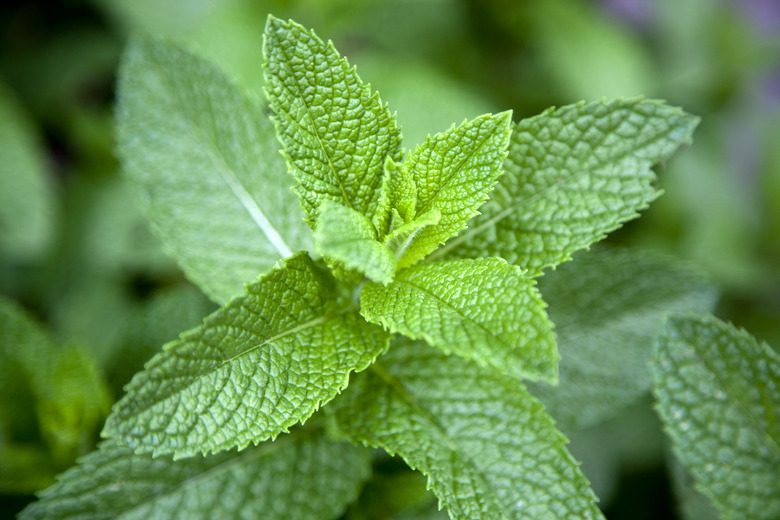How Many Times A Day Does A Mint Plant Need To Be Watered?
Mint (Mentha spp.) is typically a vigorous plant, but you need to know some basic care steps, including how often mint plants need to be watered. Adding mint to your herb garden adds a pleasing aroma and a useful perennial herb. It can go into your recipes and beverages or be used as a digestive aid to ease stomach cramps and nausea, expel gas, cure hiccups and soothe headaches with its cooling effect. Consistent moisture is important, but instead of watering on a schedule, it's best to monitor the soil's moisture levels.
Tip
Instead of watering mint plants on a schedule, focus on keeping the soil consistently moist without being saturated. Mint plants usually need 1 to 2 inches of water per week, but growing conditions can affect how much water the mint needs.
Mint Plant Water Requirements
Mint Plant Water Requirements
Mint can grow successfully in a variety of soils and light conditions, but one thing it needs is constantly moist, not saturated, soil with adequate drainage. Mint plants generally need about 1 to 2 inches of water every week, depending on the environmental conditions. This includes both rain and your supplemental watering.
Mint plants like water, but they cannot withstand soggy soil and wet feet, so monitoring the soil and using it as a guide for when to water is the best option. Use a moisture probe or stick a finger in the soil. If it feels dry to 1 inch deep, add water to the mint plant. Water the plants in the morning so that they have plenty of moisture by the time the harsher afternoon sun hits and to give the leaves time to dry.
Container Plant Watering Needs
Container Plant Watering Needs
Many gardeners grow their mint in containers because of the plant's invasive nature. Container plants often need more watering than in-ground plants since they have a limited amount of soil. If the container is made of a porous material such as terracotta clay, then the mint plant may need even more water because water leaches out of the container with each watering.
If the soil feels dry or only slightly moist, water the mint plant thoroughly in the morning. An ideal container for a mint plant is one that self-waters. Self-watering containers come equipped with reservoirs that hold water and, when the soil becomes dry, water is drawn up by osmosis. The gardener's only job is to keep the reservoir full, and the mint plant determines when and how much water to draw up.
Water and Light Conditions
Water and Light Conditions
Mint tolerates a variety of light conditions as long as adequate water is provided. If the mint plant is set in full sun, more water is needed because it loses more water due to evaporation. Water the mint plant in the early morning if the soil is dry, and then check the plant in the early or middle afternoon to see if it needs more water.
Stick a finger in the soil, and if it feels dry or only slightly moist, add water. Only add about half as much as the morning watering. Diseases can form when a plant's soil has too much water in it at nighttime. For a mint plant that receives partial sunlight or full shade, watering once thoroughly in the morning is sufficient if the soil feels dry.
Signs of Overwatering
Signs of Overwatering
An overwatered mint plant has yellowing leaves, weak stems and appears droopy. It's also more susceptible to diseases such as mint rust, powdery mildew, black stem rot, verticillium wilt, leaf blight and white mold stem rot. Remove damaged areas of the mint plant if the problem persists. Allow the mint to dry thoroughly between waterings and reduce the amount of water given if your plant shows signs of overwatering.
Signs of Underwatering
Signs of Underwatering
A mint plant that has yellow bottom leaves and/or shriveled or wilted leaves isn't receiving enough water. The leaves are the first to be affected by water deficiency because the plant conserves what little moisture it has for the roots. The mint plant's roots also will start to protrude through the surface in search of any water they can find. Water the mint plant thoroughly and cover any exposed roots with soil.
